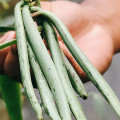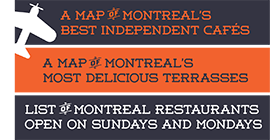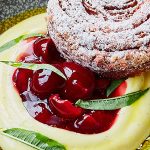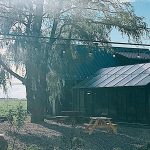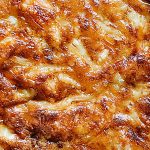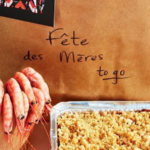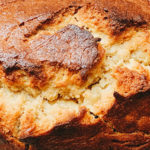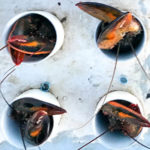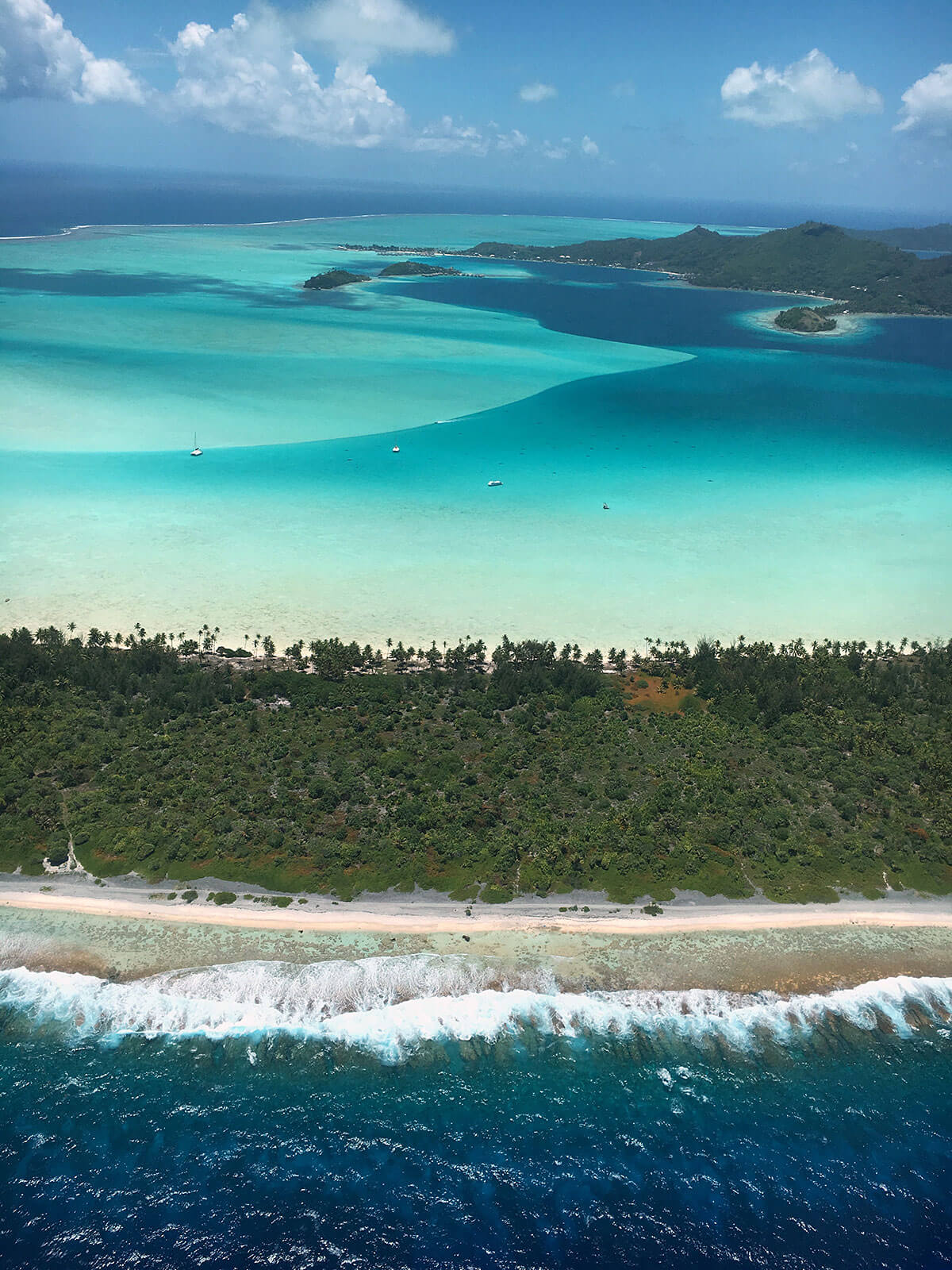
Bora Bora’s unbelievable array of blues and greens
French Polynesia is a collection of 118 islands and atolls, 67 of which are inhabited, and the largest of which is Tahiti. The only international airport and everyone’s first contact with the islands is in Tahiti’s capital of Papeete. From there, you can choose to stay in the capital or take one of the many daily local flights to other islands. The islands are dispersed over 2000 kilometers that constitute an area as large as France when put together. They are divided into 5 groups: the Society Islands archipelago (Bora Bora and Tahiti are part of this group), the Tuamotu Archipelago, the Gambier Islands, the Marquesas Islands, and the Austral Islands.
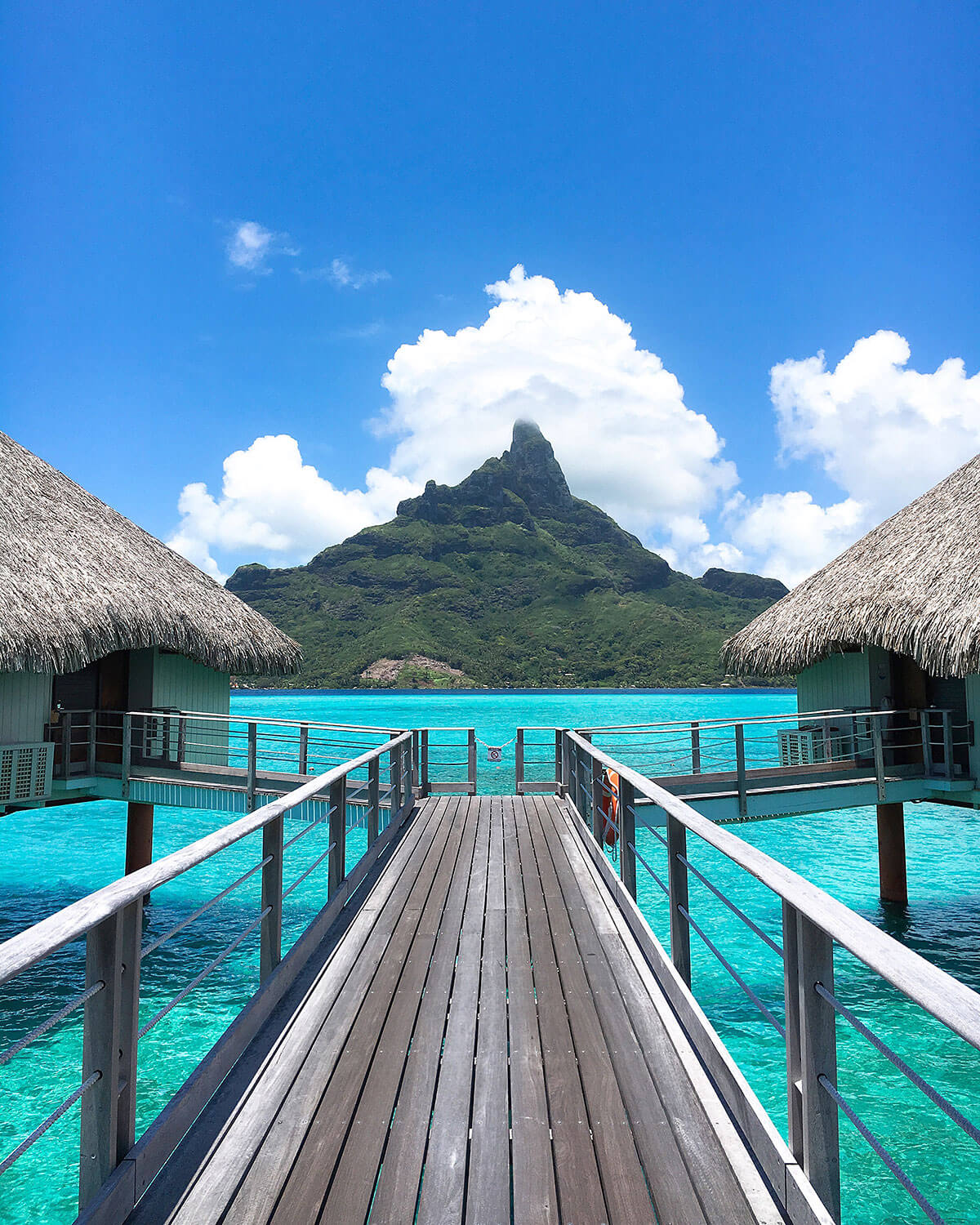
Le Méridien’s over-the-water bungalows with a view of Bora Bora’s Mount Otemanu
French Polynesia was one of the last spots on earth to be settled and one of the latest to be colonized. I can only imagine arriving on these islands for the first time! It is truly the most beautiful place I have ever seen, and I have seen some gorgeous places in my travels. The islands are so remote that there were no indigenous mammals on them until settlers introduced cattle, chicken, dogs and more. There are still very few land animals there, a lot of birds and insects but none that are venomous, although the mosquitoes will try to kill you. In the water is a completely different story, of course, and many sea creatures inhabit the gorgeous waters of French Polynesia.
Everyone in French Polynesia speaks Tahitian and French. The locals are some of the happiest, most welcoming people I have had the pleasure to encounter. Even their language is akin to singing the words. The Tahitian culture is the same Polynesian one that you’ll find in New Zealand, Hawaii or Samoa.
So what does one do in this corner of paradise besides relaxing and gawking in admiration at the absurd colours of the surrounding lagoon? Plenty!
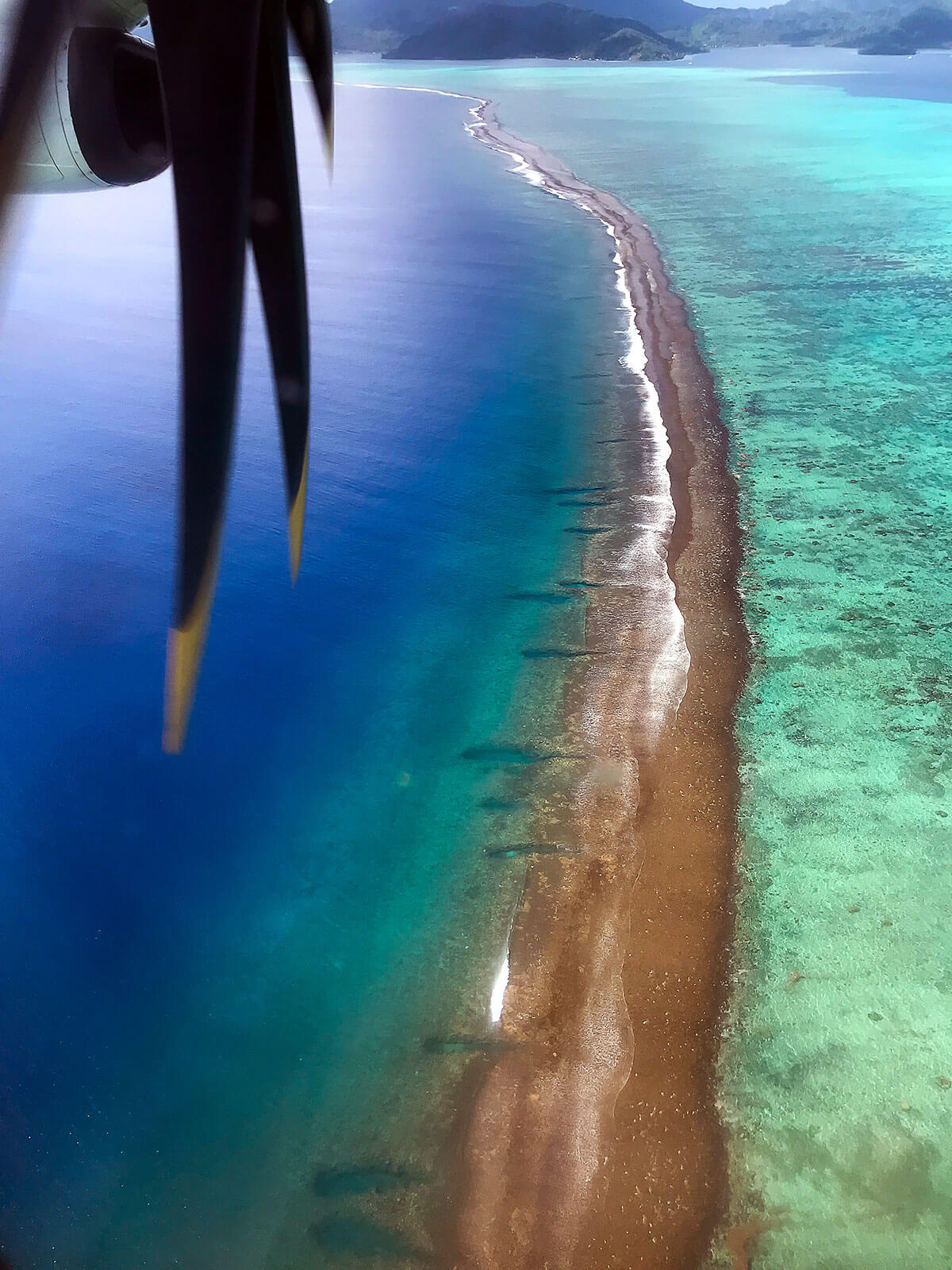
Always get a window seat on island hoppers {photo © mrb404}
Go island hopping
Each of the 118 islands in French Polynesia has a different personality and when you’ve taken such a long trip to get there, you should at least visit a couple of them. From Tahiti, you can grab one of the many daily island hopper flights to get to your destination. Not all islands have airports and you might have to catch a flight combined with a boat ride to get to your resort. A lot of the high-end hotels also have helipads, if a helicopter is more your kind of ride. One of the hardest decisions you’ll have to make is choosing which islands to visit. Will it be picture perfect Bora Bora, untamed Taha’a or isolated Rangiroa? Whatever you decide, always pick a window seat on your internal flights because the views are just incredible.
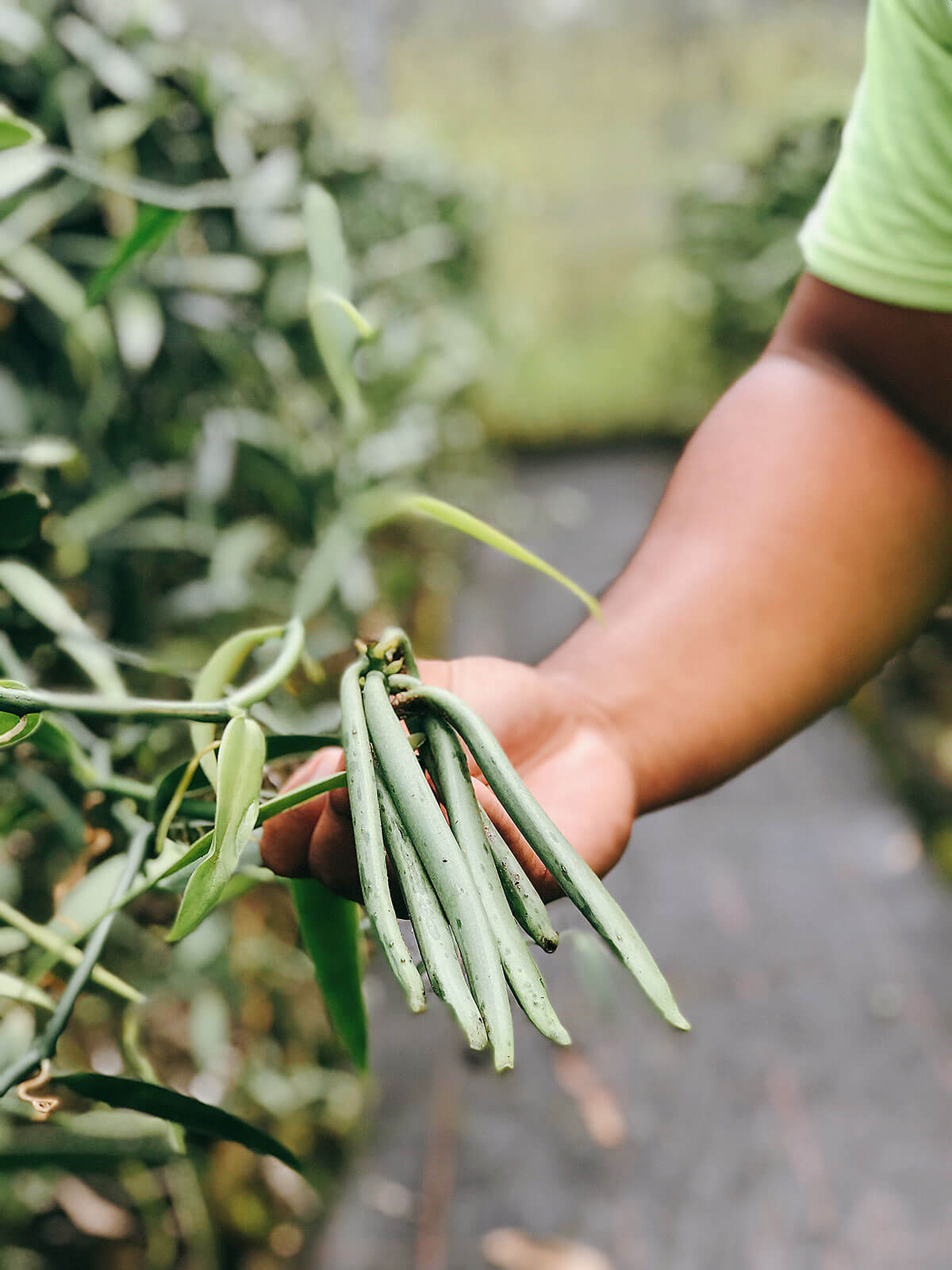
Tahiti’s world famous vanilla {photo © mrb404}
Visit the “vanilla island”
Tahitian vanilla is world-renowned for its delicate flavour used in baking and perfume making. The island of Taha’a produces about 80% of French Polynesia’s vanilla. Many vanilla farm tours are offered via hotels and include a visit to a plantation followed by one to a processing facility. Keep in mind that most of these plantations are artisanal, family-owned ones. Taha’a is a lush island with a wet climate perfectly suitable to grow vanilla. The island is dotted with hundreds of vanilla plantations shrouded in nets. Vanilla growing is a delicate and long process. It takes about a year of production, from flower to commercial vanilla bean, which justifies in part its high pice. If you’re a baker or have friends who are, buy some vanilla beans while you’re on Taha’a. They will still be pricey, but much more affordable than what you can find anywhere else.
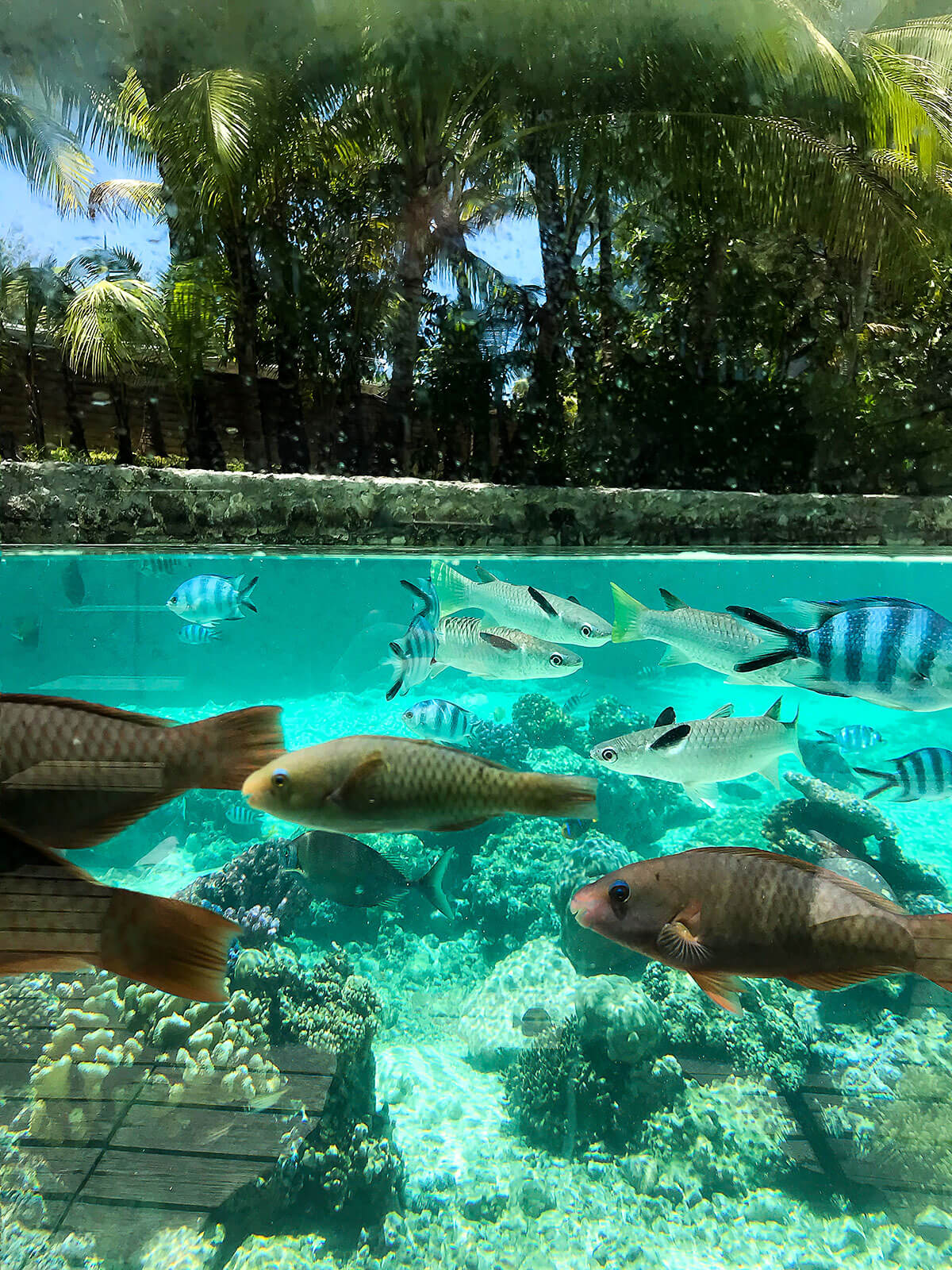
Snorkeling in French Polynesia {photo © mrb404}
Snorkel and/or scuba dive
The water in French Polynesia is so clear that you almost don’t need a mask to see all the beauty swimming below. Regardless though, bring a mask (or borrow one from the hotel) and dive in anywhere and everywhere. The islands are surrounded by a lagoon and a ring of motus or reef islands. Those unbelievable shades of blue and green that you see in all the pictures are actually all part of the lagoons. The different shades are actually determined by how deep the water is. If you’re a diver, there are many scuba diving sites around the islands. If you’re not, you can still witness so much beauty. The array of tropical fish is astounding and they are all so colourful and so uniquely strange and beautiful. I remarked that it was similar to giving kids coloured pencils and asking them to draw fish and then bringing those to life. A fish with a diminutive trunk? Check! A fish with a rainbow raincoat? Check!
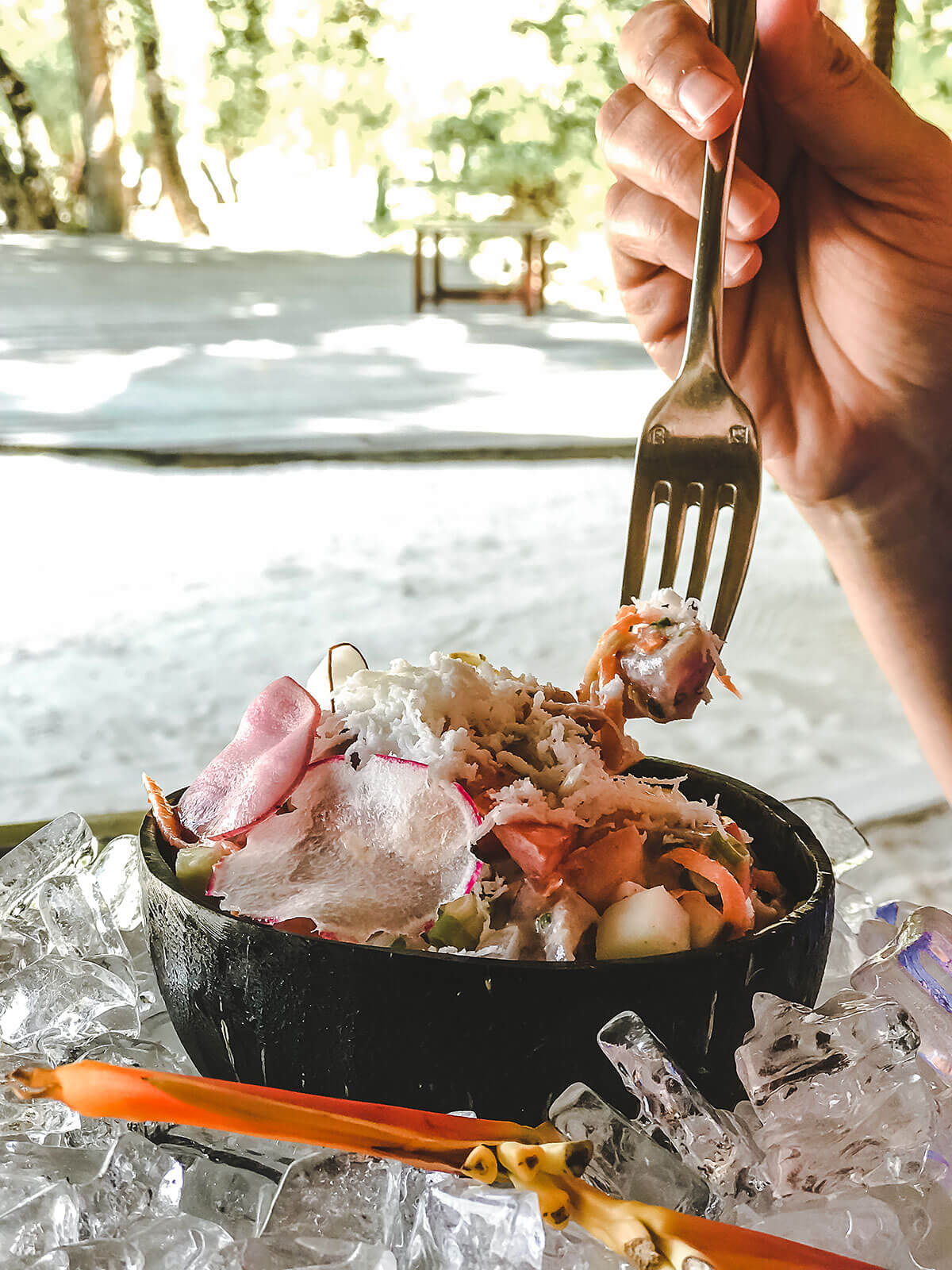
Poisson cru (or raw fish) is French Polynesia’s national dish {photo © mrb404}
Gorge on poisson cru
French Polynesia’s gastronomic culture is so intimately intertwined with that of the many cultures that have visited that it’s hard to distinguish a true island cuisine. Fresh fish and seafood are, of course, very common with “poisson cru” (raw fish), the Tahitian national dish, being the most common. Poisson cru consists of cubes of fresh raw tuna mixed with cucumbers, grated carrots, tomatoes and fresh coconut slivers marinated in a mixture of lime juice and coconut milk. It’s sometimes served with a side of white rice. It’s fresh and delicious and just what you’ll want to eat while in French Polynesia. You’ll find it on most menus, including your hotel’s breakfast buffet. I honestly ate some for breakfast, lunch and dinner almost every day.
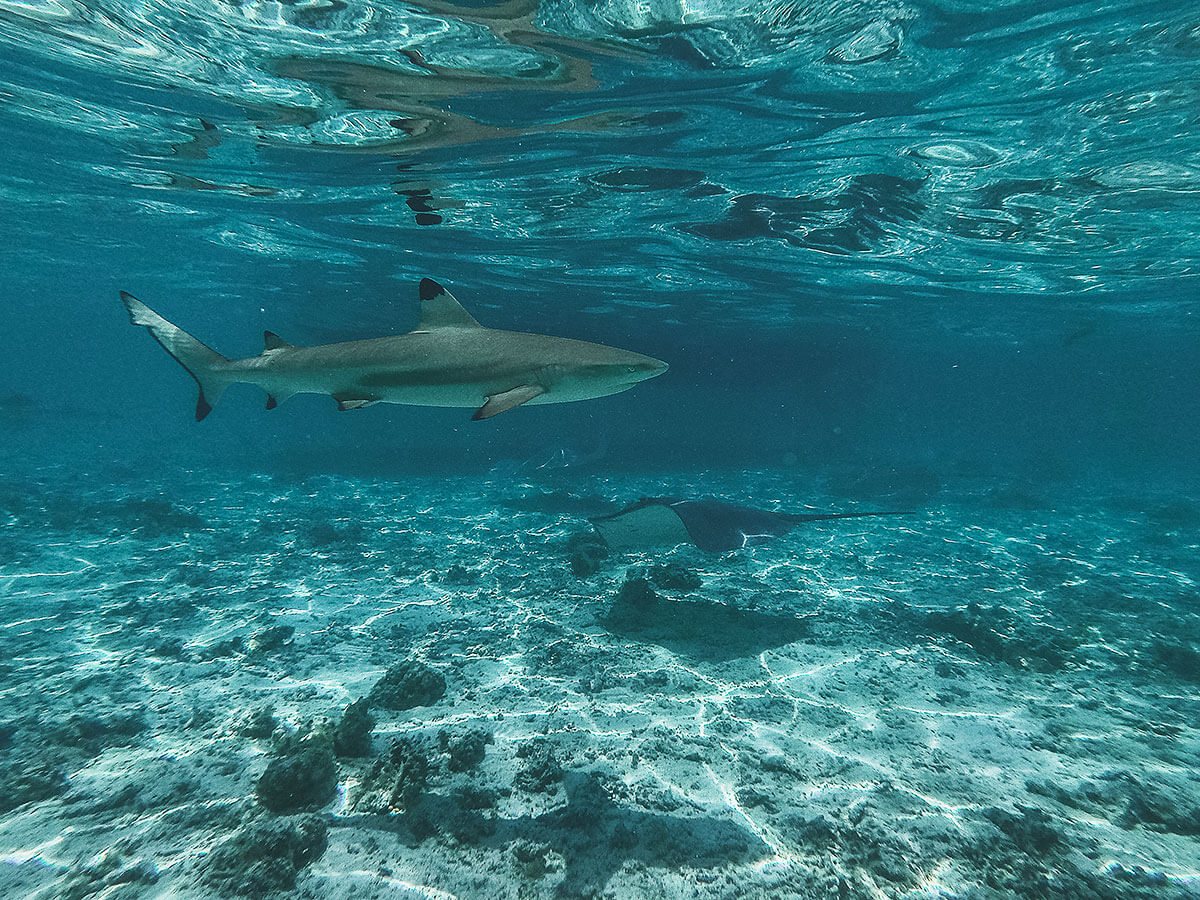
Swimming with blue tip sharks and stingrays in French Polynesia {photo © mrb404}
Swim with sharks and stingrays
This was definitely one of my favourite activities while I was in French Polynesia! You can book a tour from your hotel or even online ahead of your trip. I highly recommend Bora Bora Onoku Services, a family-run business with attentive guides that are great raconteurs. The boat picks you up from your hotel and speeds up to the open ocean beyond the lagoon for the first stop of the tour: swimming with sharks. Snorkeling equipment is provided if you don’t have your own. The most common sharks are the harmless and petite back tip sharks and the larger lemon sharks. If you’re lucky, you might see a hammerhead or two or even some dolphins. I wasn’t that lucky but swimming in a school of tropical fish and black tip sharks gliding around close to the surface was so thrilling! The larger lemon sharks swim a few meters below and are beautiful to look at.
The second stop of the tour takes you to a sandy shallow part of the lagoon where curious stingrays rub up against you while flitting around. Stingrays are very friendly and don’t actually sting unless you accidentally step on them while they’re buried in the sandy bottom of the lagoon. For extra precautions, the rays that are around people have their stinger removed. These are naturally “removable” (they leave them behind when they sting) and eventually grow back. Stingrays are a common sight everywhere in French Polynesia but it was a thrill every time I saw one. The bottom part of their flaps are so smooth and soft while the top of their bodies has a little more texture. Their tails are very rough and can really hurt.
The third stop on the tour was a magnificent coral reef where we snorkeled with hundreds of tropical fish and admired the multi-coloured corals that were fairly close to the surface.
If you’re lucky enough to be there during the whale migrating season (August to early October), book a tour to swim with these gentle giants!
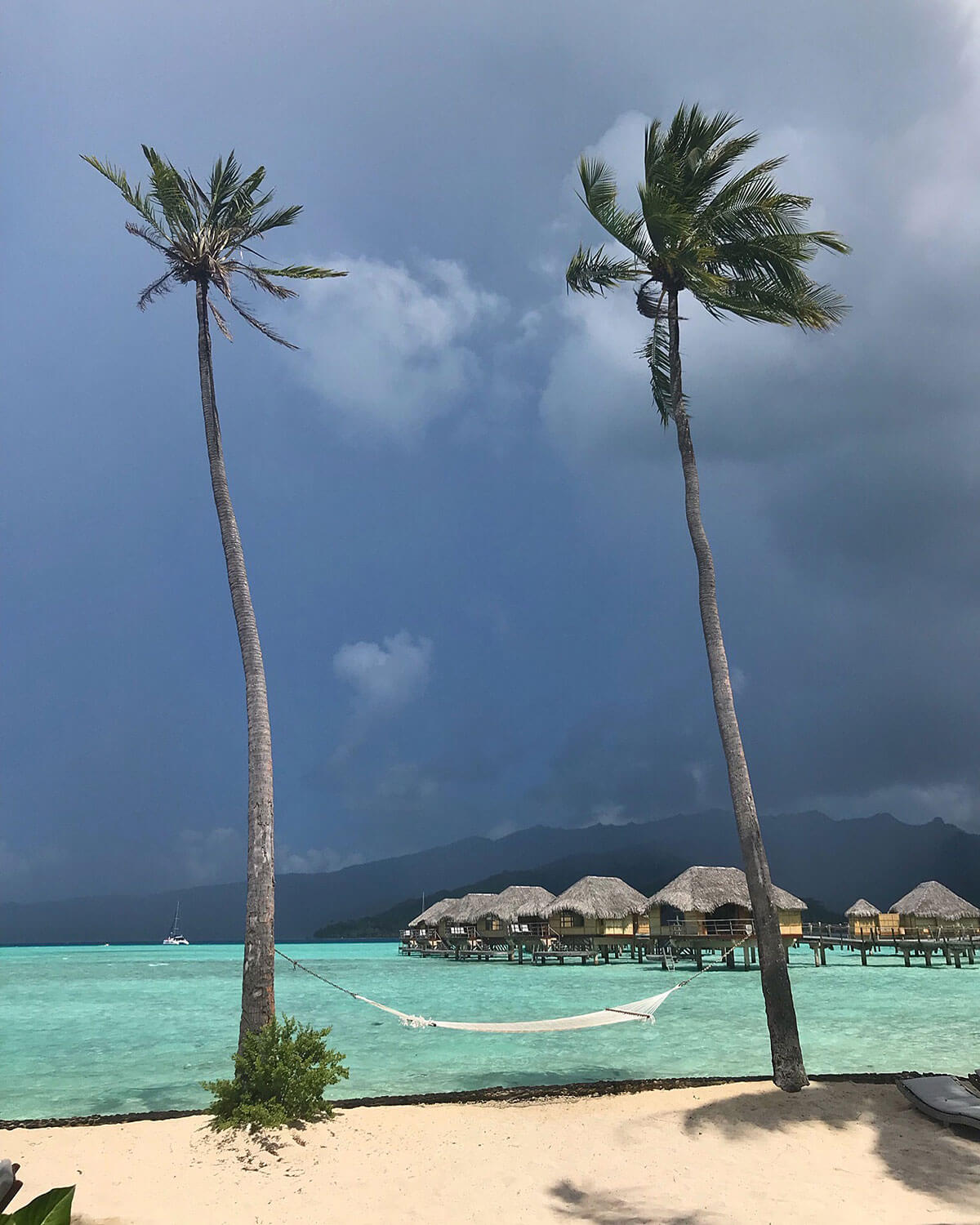
Le Taha’a Island Resort & Spa’s over-the-water bungalows {photo © mrb404}
Stay in an over-the-water bungalow
Isn’t staying in one of those dreamy, over-the-water bungalows on everyone’s ultimate bucket list? I know it was on mine and it didn’t disappoint. If you are going to travel for over 24 hours to get to French Polynesia, you should splurge on one of these babies for at least a night or two. Sure, there are more affordable accommodations on the main island but staying on one of the motus (little islands around the atoll) in one of these bungalows is a dream come true. Each bungalow has its own private deck, individual access to the water and incredible views. Some of them even have glass floors so you can watch the fish swim by without even getting out of bed!
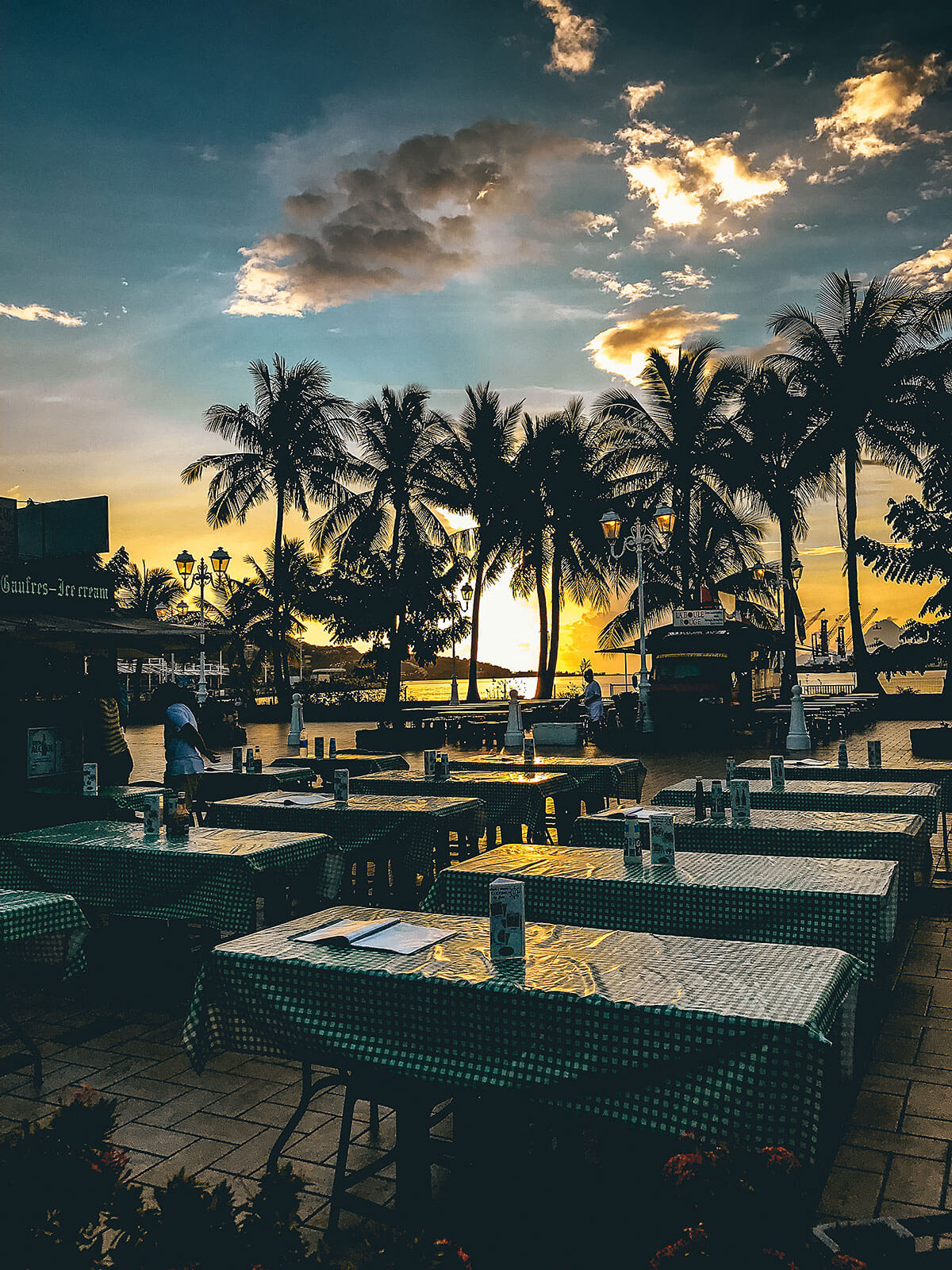
Les roulottes, a gathering of dozens of food trucks in Tahiti {photo © mrb404}
Feast at Les roulottes
Before I hopped on a plane back home, I stopped by Papeete’s famous Les roulottes, a colourful gathering of a dozen or so food trucks on Place Vaiete where one can truly witness and taste French Polynesia’s international food culture influenced by the many cultures that have passed through its ports. From crêpes and pizza to Chinese stir-fries and fresh seafood and poisson cru, Place Vaiete is the place to head to for a heaping plate of wallet-friendly food once the sun goes down. Every “roulotte” sets up its own seating area with stools and plastic tables clad in vibrant vinyl tablecloths, all vying for your attention. I honestly had a hard time picking because quite a few of the trucks looked good. I opted for a last serving of poisson cru before heading back as well as a plate of curry and coconut crusted seared tuna served with salad and rice. Be warned that portions in French Polynesia are very generous.
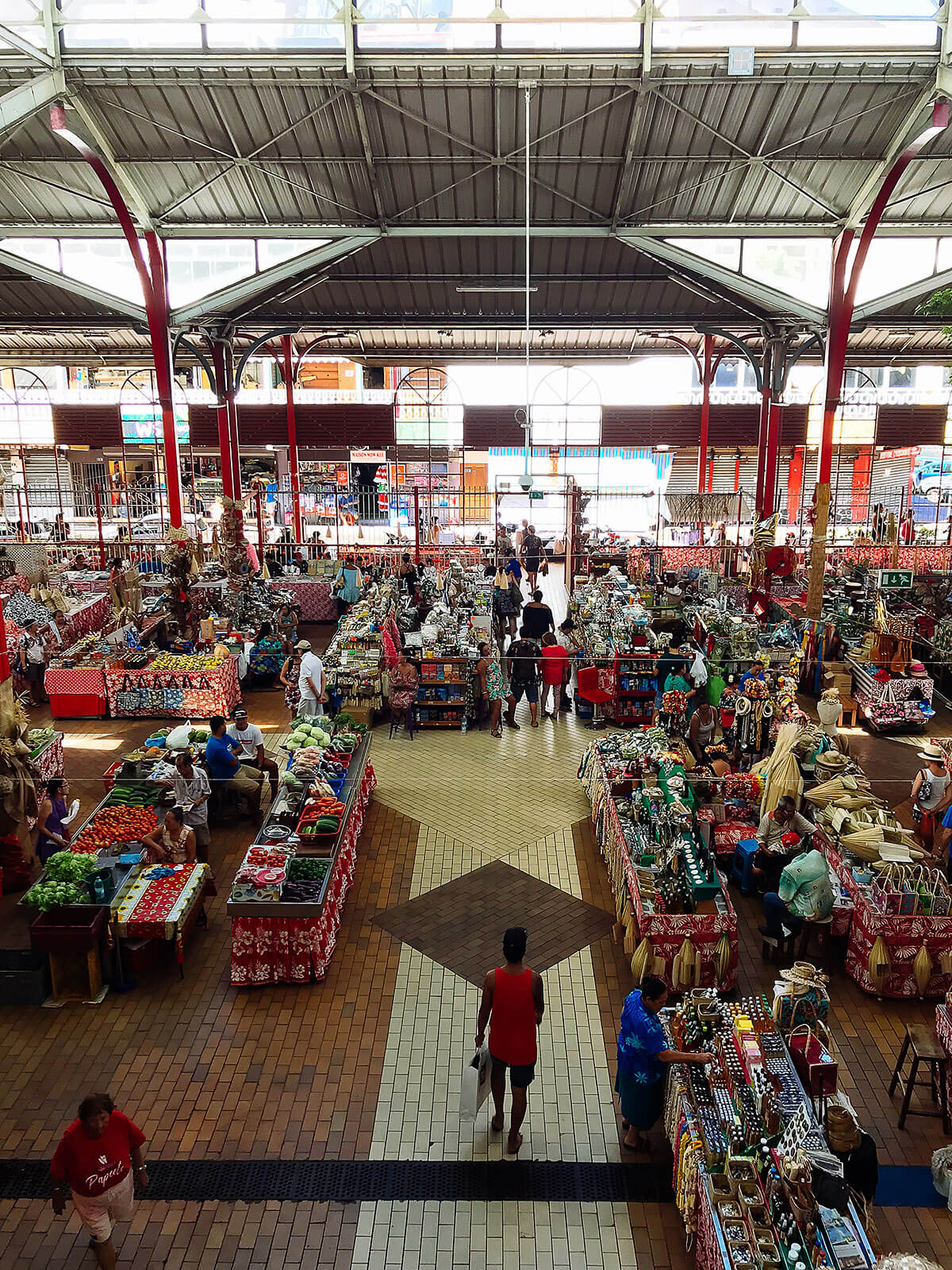
Tahiti’s farmers’ market {photo © mrb404}
Discover Papeete’s market
Tahiti’s Papeete Market is the oldest and most important one in French Polynesia. It’s housed inside a 19th century hall building. The first floor is dedicated to food while the second floor has more arts and crafts vendors. I didn’t spend a lot of time in Papeete but I did make time to go to the market and discover all the seasonal fruit and veggies available as well as admire all the fish and seafood. I even had my first taste of poisson cru from one of the market vendors. If you’re looking to purchase some local crafts, you can find baskets, sarongs, Polynesian shirts and dresses, trinkets and knickknacks at the market and more serious black pearl jewelry in stores surrounding the market.
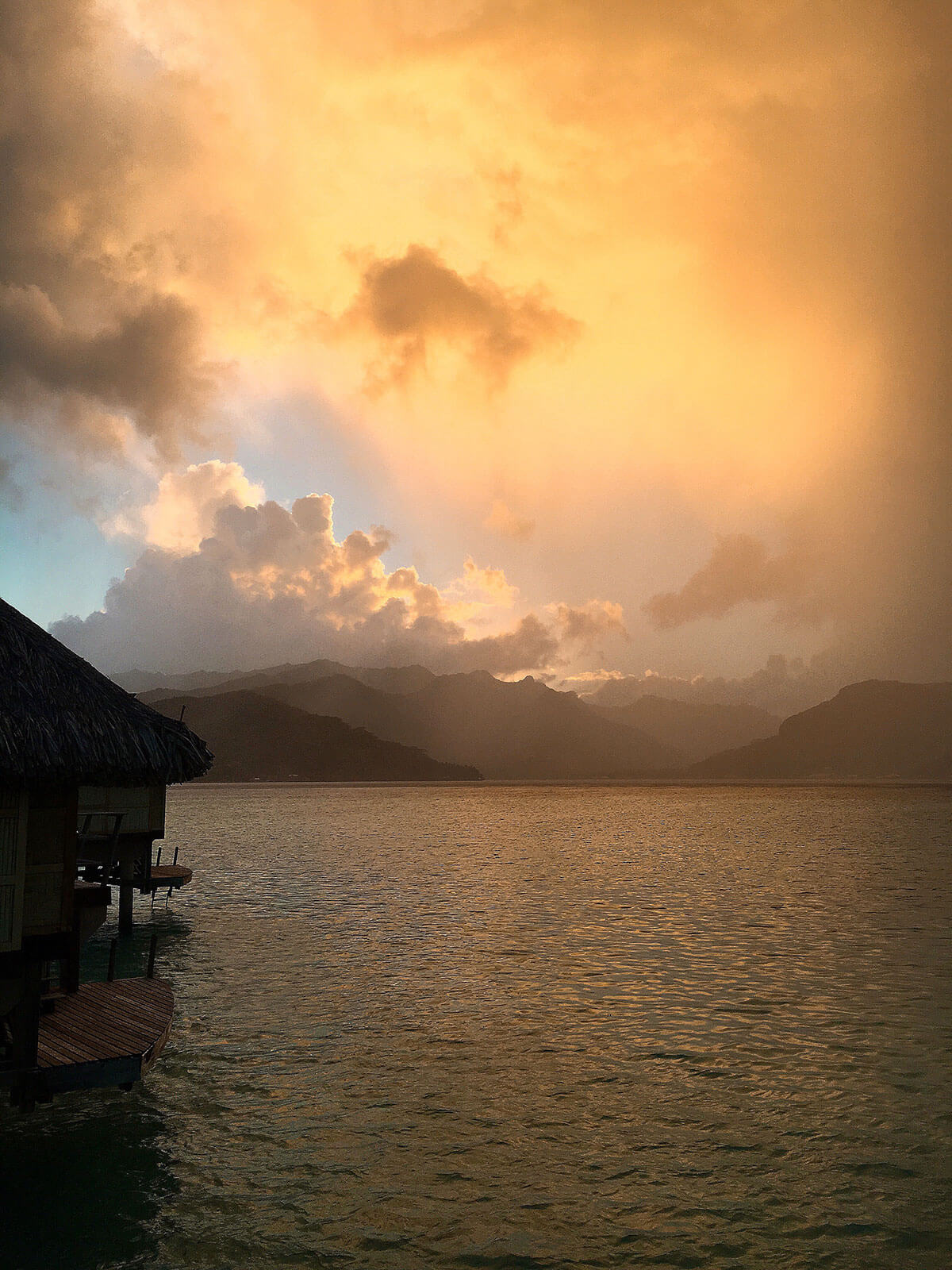
Sunrise from Le Taha’a Island Resort & Spa
Chase sunrises and sunsets
I have always chased sunsets during my travels as I’ve never been an early riser but I have found myself surprisingly chasing sunrises on this particular trip. I was astonished to find myself awake naturally every morning before the sun rose. There’s something magical about witnessing the day break over that slice of paradise from your private deck. The sky took on incredible shades of pinks, yellows, oranges and reds that reflected beautifully in the calm waters of the lagoon. It was like witnessing the birth of an unbelievable work of art and I couldn’t get enough of it. The sunsets were less dramatic but just as lovely, especially when the stage for the end of each day was behind Bora Bora’s Mount Otemanu. My advice is to book a room with a sunrise or sunset view and make sure you don’t miss the show.
Stargaze
One of the advantages of being on a speck of an island in the middle of the South Pacific is the incredible celestial spectacle you can admire every night. I recommend downloading the app Star Chart that lets you identify the night sky and lying down somewhere to indulge in the stars. You might be able to spot some shooting stars and satellites. Don’t forget to spritz on some mosquito repellent!
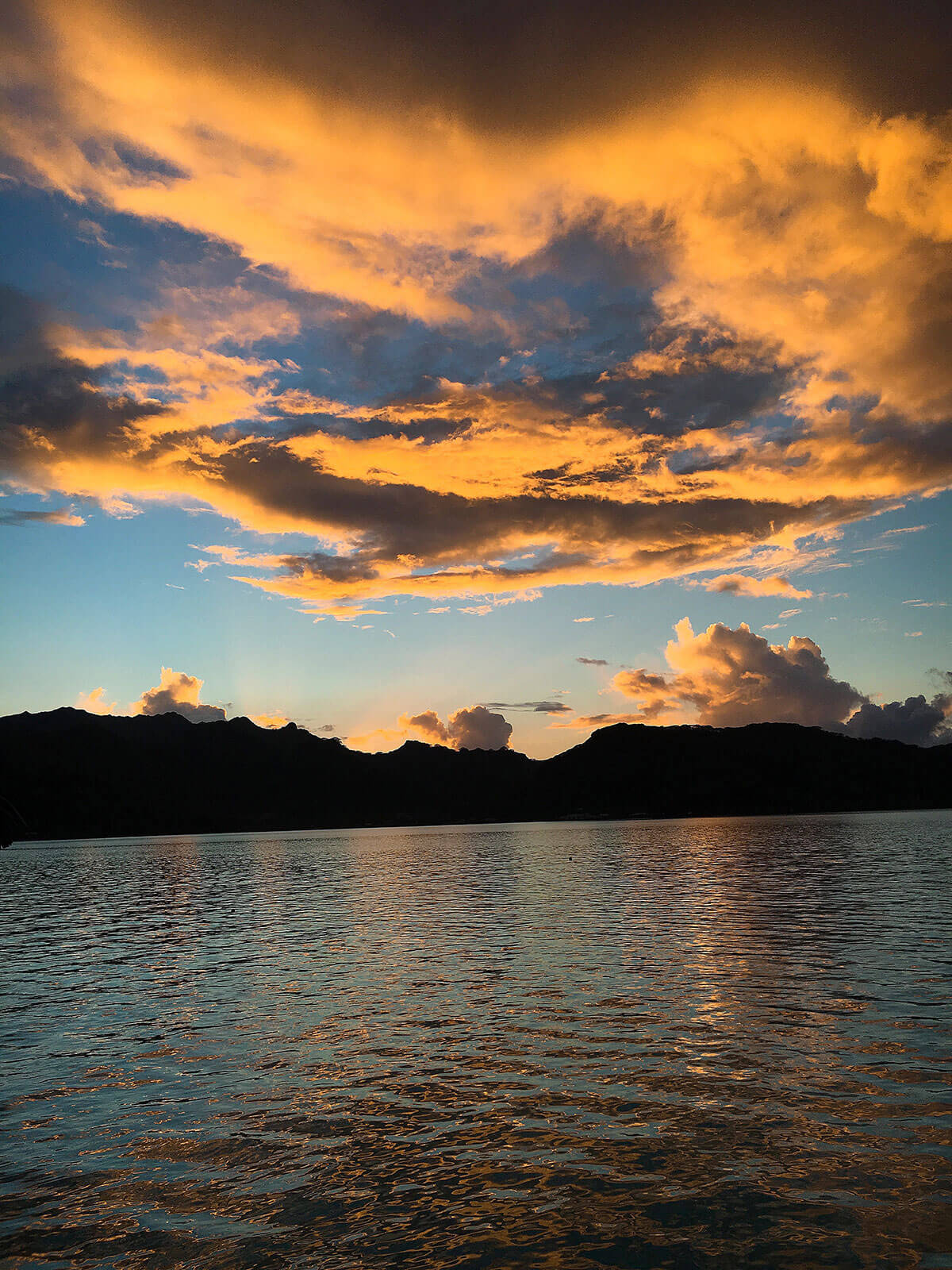
Sunrise from Le Taha’a Island Resort & Spa
Other activities
There are many other things to do on the islands. Hiking around most islands, participating in any and all water sports from paddle boating to surfing, visiting Polynesian archeological sites or museums, getting a Polynesian tattoo, learning Polynesian dancing, visiting a pearl farm, indulge in a spa treatment and more. Although I must say that the idea of just relaxing and enjoying the surroundings can be overwhelming and giving in to it is nothing but sweet surrender.
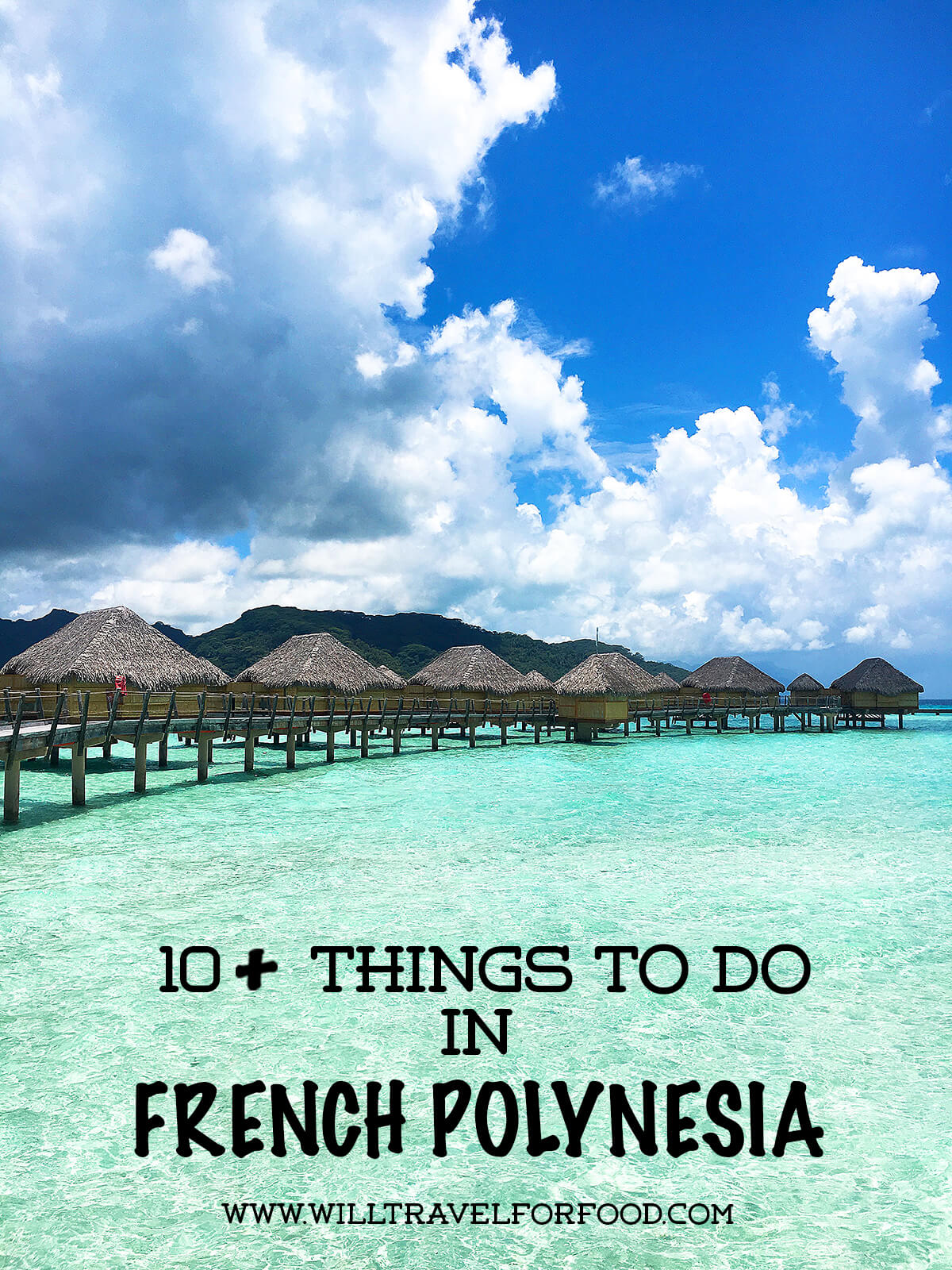
{ PIN IT } 10+ things to do in French Polynesia



